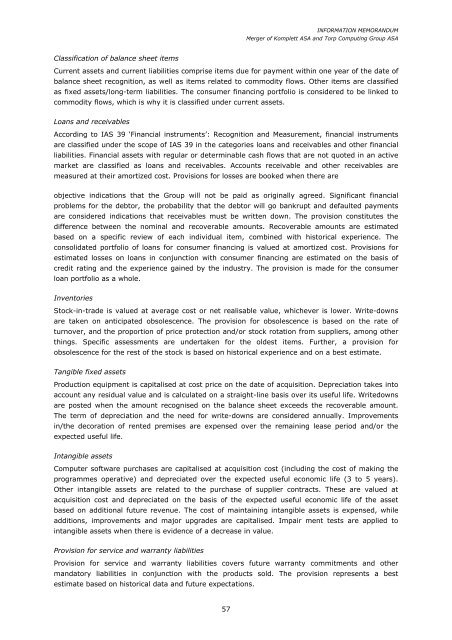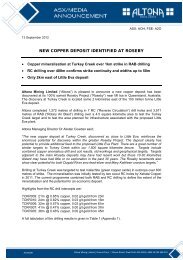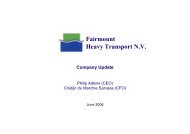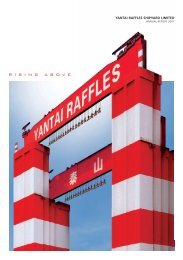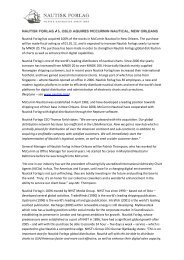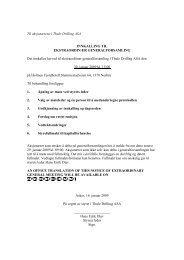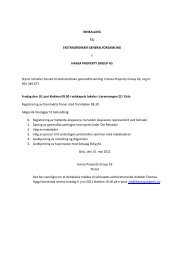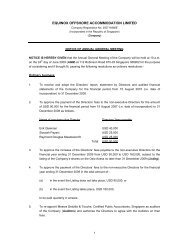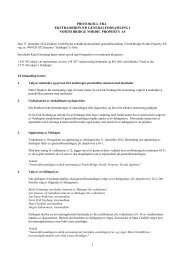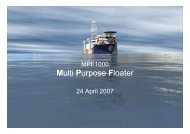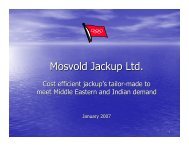Torp Computing Group ASA
Torp Computing Group ASA
Torp Computing Group ASA
You also want an ePaper? Increase the reach of your titles
YUMPU automatically turns print PDFs into web optimized ePapers that Google loves.
57<br />
INFORMATION MEMORANDUM<br />
Merger of Komplett <strong>ASA</strong> and <strong>Torp</strong> <strong>Computing</strong> <strong>Group</strong> <strong>ASA</strong><br />
Classification of balance sheet items<br />
Current assets and current liabilities comprise items due for payment within one year of the date of<br />
balance sheet recognition, as well as items related to commodity flows. Other items are classified<br />
as fixed assets/long-term liabilities. The consumer financing portfolio is considered to be linked to<br />
commodity flows, which is why it is classified under current assets.<br />
Loans and receivables<br />
According to IAS 39 ‘Financial instruments’: Recognition and Measurement, financial instruments<br />
are classified under the scope of IAS 39 in the categories loans and receivables and other financial<br />
liabilities. Financial assets with regular or determinable cash flows that are not quoted in an active<br />
market are classified as loans and receivables. Accounts receivable and other receivables are<br />
measured at their amortized cost. Provisions for losses are booked when there are<br />
objective indications that the <strong>Group</strong> will not be paid as originally agreed. Significant financial<br />
problems for the debtor, the probability that the debtor will go bankrupt and defaulted payments<br />
are considered indications that receivables must be written down. The provision constitutes the<br />
difference between the nominal and recoverable amounts. Recoverable amounts are estimated<br />
based on a specific review of each individual item, combined with historical experience. The<br />
consolidated portfolio of loans for consumer financing is valued at amortized cost. Provisions for<br />
estimated losses on loans in conjunction with consumer financing are estimated on the basis of<br />
credit rating and the experience gained by the industry. The provision is made for the consumer<br />
loan portfolio as a whole.<br />
Inventories<br />
Stock-in-trade is valued at average cost or net realisable value, whichever is lower. Write-downs<br />
are taken on anticipated obsolescence. The provision for obsolescence is based on the rate of<br />
turnover, and the proportion of price protection and/or stock rotation from suppliers, among other<br />
things. Specific assessments are undertaken for the oldest items. Further, a provision for<br />
obsolescence for the rest of the stock is based on historical experience and on a best estimate.<br />
Tangible fixed assets<br />
Production equipment is capitalised at cost price on the date of acquisition. Depreciation takes into<br />
account any residual value and is calculated on a straight-line basis over its useful life. Writedowns<br />
are posted when the amount recognised on the balance sheet exceeds the recoverable amount.<br />
The term of depreciation and the need for write-downs are considered annually. Improvements<br />
in/the decoration of rented premises are expensed over the remaining lease period and/or the<br />
expected useful life.<br />
Intangible assets<br />
Computer software purchases are capitalised at acquisition cost (including the cost of making the<br />
programmes operative) and depreciated over the expected useful economic life (3 to 5 years).<br />
Other intangible assets are related to the purchase of supplier contracts. These are valued at<br />
acquisition cost and depreciated on the basis of the expected useful economic life of the asset<br />
based on additional future revenue. The cost of maintaining intangible assets is expensed, while<br />
additions, improvements and major upgrades are capitalised. Impair ment tests are applied to<br />
intangible assets when there is evidence of a decrease in value.<br />
Provision for service and warranty liabilities<br />
Provision for service and warranty liabilities covers future warranty commitments and other<br />
mandatory liabilities in conjunction with the products sold. The provision represents a best<br />
estimate based on historical data and future expectations.


